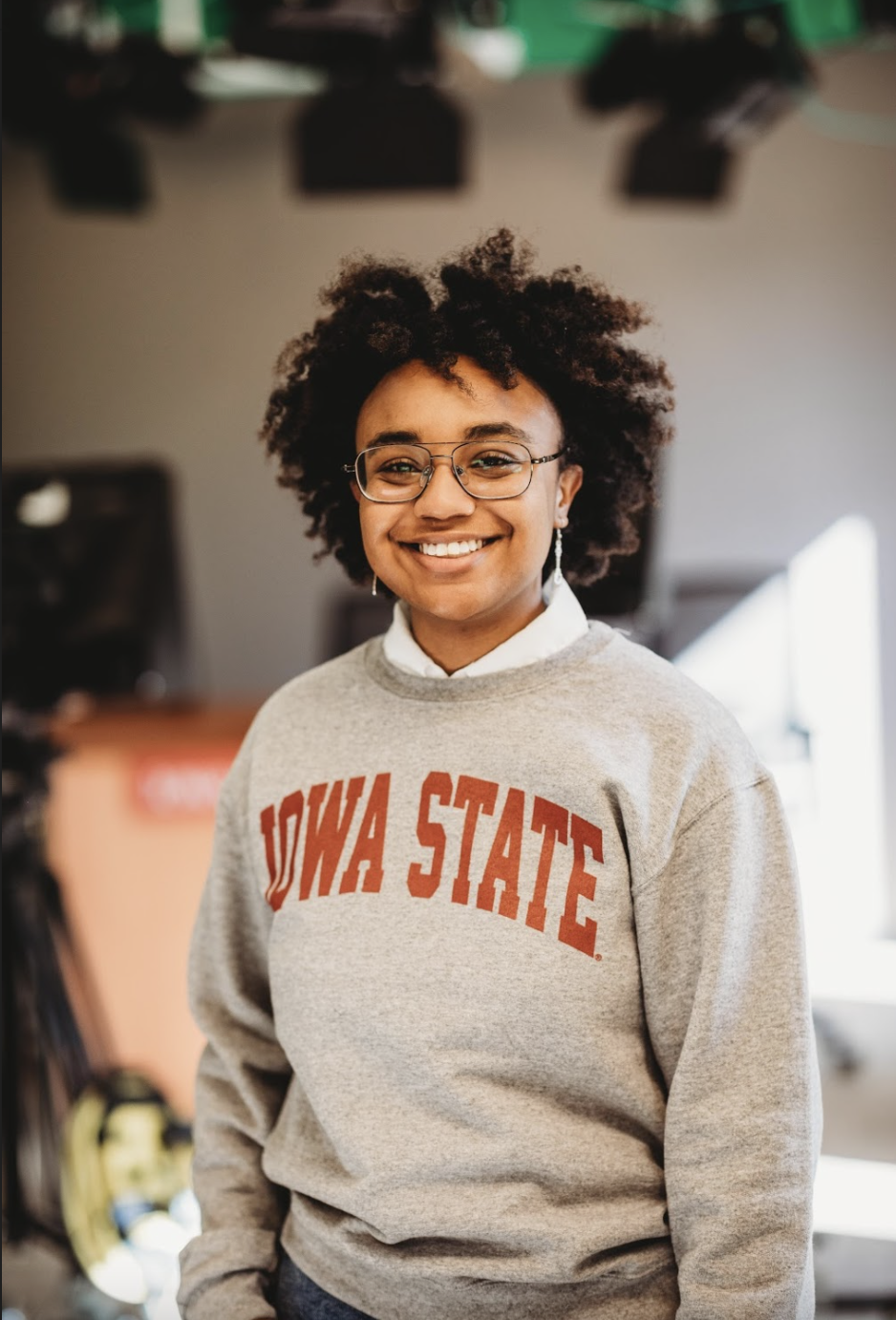Reviews: Bridging the Space Between Identities: Trinity Jones on Davon Loeb’s The In-Betweens
By Trinity Jones
The In-Betweens
Davon Loeb
Everytime Press, 2018
190 pp.
In his memoir, The In-Betweens, Davon Loeb explores the transformation that happens when navigating his racial and ethnic identities as the son of a Black mother and a white-Jewish father. Through a series of lyric essays snapshotting his life, Loeb shows that being a part of multiple cultures is a difficult process to navigate. He not only describes specific experiences that worked to separate his Jewish and Black identities, such as in his essay “Thoughts on Hair,” in which he describes the struggle of using his hair as a cultural identifier, but he also shows that no matter how hard society tries to widen the gap between these identifiers, it is possible to lessen that space over time. This narrative also shows that reconnecting an individual and their culture is not a linear process, but instead, an indefinite one. Loeb provides a detailed account of how he came to accept both identities which included gaining an understanding of what contributed to the creation of the gap as well as the challenges of closing the gap.
Loeb begins his story by providing background on the dynamics of his parent’s relationship prior to his birth: “He was married to a woman his age, and a father of two. She was married to a man her age, and a mother of two. And my father was White and my mother was Black, in America, and everything was stacked against them.” This passage allows readers to immediately feel the tension that comes with being in a biracial relationship. The description of his parents getting stared at and side-eyed for being together in public allows readers to see that the gap experienced by Loeb, due to his biracial identity, was there even before he was born. Due to America’s history of categorizing individuals based on their race, society pressures individuals to choose a singular race to be associated with for the rest of their life, but what happens when someone is more than one? What happens when an individual knows they are part of both yet are not fully accepted in either? Furthermore, why does an individual, like Loeb, even have to feel pressured to choose one, when the topic of biracialism is extremely complex and impossible to reduce? This is what is described throughout Loeb’s narrative—this meeting place between two races and the struggle that is never fully resolved, to understand that he’s not simply one or the other, but equally both.
The societal pressure to choose one race or ethnicity was reinforced by his own family on both his Black side and his Jewish side. In the essay “Alabama Fire Ants,” he describes his cousins throwing a football over his head as they play “white boy in the middle.” Loeb was considered white amongst his cousins. Right here, we see Loeb begin to realize that he doesn’t completely fit in with his Black family and start to question his own identity. In another essay, he describes his older brother, his father’s son, informing him that their grandmother had passed away, but the brother refers to her as his grandmother and not Loeb’s. Loeb describes the scene of him processing his grandmother’s death after his brother’s phone call and recognizing the separation put between himself and his Jewish side. “I sat alone in our father’s apartment and thought of what it might feel like to mourn— to experience sadness and loss, to feel like as much as her grandson as I was your little brother.” In this scene, we see Loeb begin to examine his identity even more. His own family members are conveying to him that he’s “not Black enough” or that he’s “not white enough.” This begins his questioning of how he can simultaneously feel that he is a part of both groups, yet a part of neither: “I was a constant reminder that between the black and white was gray, where I planted and stayed [...] I was in the middle desperately trying to grab and hold on to something to call my own.”
As the essays continue, Loeb shows how the reinforcement of societal pressures by his family planted a seed of questioning within himself: “Family is supposed to be the stitch between the self and the world, but they furthered my separation.” The essay, “But I Am Not Toby” includes a scene where his mother is teaching him about Black history and is going over a list of books written by Black authors: “She’d say— look, with dignity and pride— that could be you. And I would look, and try to find some similarities in the author’s face, something that might look like me. But my lips were thinner, and my nose was sharper, and my hair was much too curly— and maybe they looked like Mom or my other family members, but not like me; I was Black like none of them.” This scene powerfully portrays the seed of questioning, caused by societal beliefs and familial reinforcement, beginning to grow as he questions his own Blackness when he is presented with Black history and culture. When presented with Jewish history, he questions whether or not he wants to claim it: “[T]o reveal being half-Jewish meant I was going to be the Black Jew— a heritage of two of some of the most historically discriminated people in the world.” As a Black man, Loeb recalls his experiences of feeling ostracized as one of the only Black students at his school: “[W]e lived in a town with zero-point-nine percent Black population and ninety-six percent White population, and I felt like the accidental ink blot.” He begins to realize the negative ways in which a society built on white supremacy treats individuals of “other” races. This makes him question why he would want to claim his identity in another persecuted group that he’s a part of: “The litany of ridicule would never end. So, I never affiliated myself with it.” Society created the gap, but it’s his internalization of these racial and social tensions that widens it.
What is most powerful about Loeb’s memoir is not just that he describes how the gap between two cultures are created and widened, but how he acknowledges that it is possible to build a bridge between the space. In the essay, “History Class Field Trip to Washington, D.C.” he describes an emotional experience of visiting the Holocaust museum and his shame of not wanting to admit that he’s Jewish. It’s in this essay that he begins to question the disconnect. Up to that point, he had always identified as Black, because he was raised by a Black family, but it’s here when he begins to wonder how he would have identified had he been raised by his father: “Maybe I could have embraced my other side— my other narrative.” He thinks back to when his grandfather died and how because he didn’t feel connected to his father’s side of the family, he only cried over his death because he felt obligated to. He ends the essay with a beautiful description of calling his paternal grandmother, and it’s with this scene that he describes the powerful realization that he can reimagine his full identity. He begins to bridge the space between himself and his cultures, realizing that he is not simply one race or the other, he is both.
Loeb states: “I wanted it to change something— acceptance, affirmation, dignity— pride in my family’s history— rather than being an outsider looking in.” This quote embodies what The In-Betweens is: an account of the struggles of Loeb being a part of two cultures, of navigating his biracial identity in a society that tells him to pick just one, of knowing that he’s both yet not being welcomed in either. The beauty of the story doesn’t just lie in the description of him grappling with this realization, but in him finding the beauty of being a part of multiple groups— of Loeb being able to reshape his own identity: “And I remember foreign in her little world, but also like I finally found a missing piece of something.”
About Trinity Jones
Trinity Jones is a junior at Iowa State University where she is majoring in English with a minor in Women’s and Gender Studies. She runs the Instagram @browngirlblooming_ which is dedicated to her love of books and is currently the Reviews Editor at Honey Literary. When she isn’t writing, she can be found reading, listening to music or spending time with her family.
About Davon Loeb
Davon Loeb is the author of the lyrical memoir The In-Betweens (Everytime Press, 2018). He earned an MFA in Creative Writing from Rutgers-Camden, and he is an assistant poetry editor at Bending Genres and a guest prose editor at Apiary Magazine. Davon writes creative nonfiction and poetry. His work has been nominated for two Pushcart Prizes and one Best of the Net, and is forthcoming and featured in Ploughshares Blog, PANK Magazine, Pithead Chapel, Mauldin House, JMWW, Barren Magazine, Split Lip Magazine, Tahoma Literary Review, and elsewhere. Besides writing, Davon is a high school English teacher, husband, and father living in New Jersey. Currently, he is writing a YA novel. His work can be found here: davonloeb.com and on Twitter @LoebDavon.


